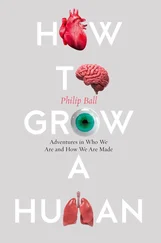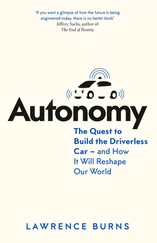Eyal, Nir - Hooked - How to Build Habit-Forming Products
Здесь есть возможность читать онлайн «Eyal, Nir - Hooked - How to Build Habit-Forming Products» весь текст электронной книги совершенно бесплатно (целиком полную версию без сокращений). В некоторых случаях можно слушать аудио, скачать через торрент в формате fb2 и присутствует краткое содержание. Год выпуска: 2014, Издательство: Nir Eyal, Жанр: Старинная литература, на английском языке. Описание произведения, (предисловие) а так же отзывы посетителей доступны на портале библиотеки ЛибКат.
- Название:Hooked: How to Build Habit-Forming Products
- Автор:
- Издательство:Nir Eyal
- Жанр:
- Год:2014
- ISBN:нет данных
- Рейтинг книги:5 / 5. Голосов: 1
-
Избранное:Добавить в избранное
- Отзывы:
-
Ваша оценка:
- 100
- 1
- 2
- 3
- 4
- 5
Hooked: How to Build Habit-Forming Products: краткое содержание, описание и аннотация
Предлагаем к чтению аннотацию, описание, краткое содержание или предисловие (зависит от того, что написал сам автор книги «Hooked: How to Build Habit-Forming Products»). Если вы не нашли необходимую информацию о книге — напишите в комментариях, мы постараемся отыскать её.
Hooked: How to Build Habit-Forming Products — читать онлайн бесплатно полную книгу (весь текст) целиком
Ниже представлен текст книги, разбитый по страницам. Система сохранения места последней прочитанной страницы, позволяет с удобством читать онлайн бесплатно книгу «Hooked: How to Build Habit-Forming Products», без необходимости каждый раз заново искать на чём Вы остановились. Поставьте закладку, и сможете в любой момент перейти на страницу, на которой закончили чтение.
Интервал:
Закладка:
However, when a request is coupled with an affirmation of the right to choose, reactance is kept at bay. But can the principles of autonomy and reactance carry over into the way products change user behavior and drive the formation of new user habits? Here are two examples to make the case that they do, but of course, you are free to make up your mind for yourself.
Take, for example, establishing the habit of better nutrition, a common goal for many Americans. Searching in the Apple App Store for the word “diet” returns 3,235 apps, all promising to help users shed extra pounds. The first app in the long list is MyFitnessPal, whose iOS app is rated by over 350,000 people.
A year ago when I decided to lose a few pounds, I installed the app and gave it a try. MyFitnessPal is simple enough to use. The app asked me to log what I ate and presented me with a calorie score based on my weight loss goal.
For a few days, I stuck with the program and diligently input information about everything I ate. Had I been a person who logs food with pen and paper, MyFitnessPal would have been a welcome improvement.
However, I was not a calorie tracker prior to using MyFitnessPal and although using the app was novel at first, it soon became a drag. Keeping a food diary was not part of my daily routine and was not something I came to the app wanting to do. I wanted to lose weight and the app was telling me how to do it with its strict method of tracking calories in and calories out. Unfortunately, I soon found that forgetting to enter a meal made it impossible to get back on the program – the rest of my day was a nutritional wash.
Soon, I began to feel obligated to confess my mealtime transgressions to my phone. MyFitnessPal became MyFitnessPain. Yes, I had chosen to install the app at first, but despite my best intentions, my motivation faded and using the app became a chore. Adopting a weird new behavior — calorie tracking, in my case — felt like something I had to do, not something I wanted to do. My only options were to comply or quit. So I quit.
On the other hand Fitocracy, another health app, approaches behavior change very differently. The goal of the app is similar to its competitors — to help people establish better diet and exercise routines. However, it leverages familiar behaviors users want to do, instead of have to do.
At first, the Fitocracy experience is similar to other health apps, encouraging new members to track their food consumption and exercise. But where Fitocracy differentiates itself is in its recognition that most users will quickly fall off the wagon, just as I had with MyFitnessPal, unless the app taps into existing autonomous behavior.
Before my reactance alarm went off, I started receiving kudos from other members of the site after entering my very first run. Curious to know who was sending the virtual encouragement, I logged in. There, I immediately saw a question from “mrosplock5,” a woman looking for advice on what to do about knee pain from running. Having experienced similar trouble several years back, I left a quick reply: “Running barefoot (or with minimalist shoes) eliminated my knee pains. Strange but true!”
I have not used Fitocracy for long, but it is easy to see how someone could get hooked. Fitocracy is first and foremost an online community. The app roped me in by closely mimicking real-world gym jabber among friends. The ritual of connecting with like-minded people existed long before Fitocracy, and the company leverages this behavior by making it easier and more rewarding to share encouragement, exchange advice, and receive praise. In fact, a recent study found social factors were the most important reasons people used the service and recommended it to others. [xciii]
Social acceptance is something we all crave, and Fitocracy leverages the universal need for connection as an on-ramp to fitness, making new tools and features available to users as they develop new habits. The choice for the Fitocracy user is therefore between the old way of doing an existing behavior and the company’s tailored solution for easing the user into healthy new habits.
To be fair, MyFitnessPal also has social features intended to keep members engaged. However, as opposed to Fitocracy, the benefits of interacting with the community come much later in the user experience, if ever.
Clearly, it is too early to tell which among the multitudes of new wellness apps and products will emerge victorious, but the fact remains that the most successful consumer technologies — those that have altered the daily behaviors of hundreds of millions of people — are the ones that nobody makes us use. Perhaps part of the appeal of sneaking in a few minutes on Facebook or checking scores on ESPN.com is our access to a moment of pure autonomy – an escape from being told what to do by bosses and co-workers.
Unfortunately, too many companies build their products betting users will do what they make them do instead of letting them do what they want to do. Companies fail to change user behaviors because they do not make their services enjoyable for its own sake, often asking users to learn new, unfamiliar actions instead of making old routines easier.
Companies that successfully change behaviors present users with an implicit choice between their old way of doing things and a new, more convenient way to fulfill existing needs. By maintaining the users’ freedom to choose, products can facilitate the adoption of new habits and change behavior for good.
Whether coerced into doing something we did not intend, as was the case when Quora opted-in all users to its “views” feature, or feeling forced to adopt a strange new calorie counting behavior on MyFitnessPal, people often feel constrained by threats to their autonomy and rebel. To change behavior, products must ensure the users feel in control. People must want to use the service, not feel they have to.
Beware of Finite Variability
In 2008, a television series called Breaking Bad began receiving unprecedented critical and popular acclaim. The show followed the life of Walter White, a high school chemistry teacher who transforms himself into a crystal meth-cooking drug lord. As the body count on the show piled up season after season, so did its viewership. [xciv]The first episode of the final season in 2013 attracted 5.9 million viewers and by the end of the series Guinness World Records dubbed it the highest-rated TV series of all time. [xcv]Although Breaking Bad owes a great deal of its success to its talented cast and crew, fundamentally the program utilized a simple formula to keep people tuning in.
At the heart of every episode — and also across each season’s narrative arc — is a problem the characters must resolve. For example, during an episode in the first season, Walter White must find a way to dispose of the bodies of two rival drug dealers. Challenges prevent resolution of the conflict and suspense is created as the audience waits to find out how the storyline ends. In this particular episode, White discovers one of the drug dealers is still alive and is faced with the dilemma of having to kill someone he thought was already dead. Invariably, each episode’s central conflict is resolved near the end of the show, at which time a new challenge arises to pique the viewer’s curiosity. By design, the only way to know how Walter gets out of the mess he is in at the end of the latest episode is to watch the next episode.
The cycle of conflict, mystery and resolution is as old as storytelling itself, and at the heart of every good tale is variability. The unknown is fascinating and strong stories hold our attention by waiting to reveal what happens next. In a phenomenon called “experience-taking,” researchers have shown that people who read a story about a character actually feel what the protagonist is feeling. [xcvi]As we step into the character’s shoes we experience his or her motivations — including the search for rewards of the tribe, hunt and self. We empathize with characters because they are driven by the same things that drive us.
Читать дальшеИнтервал:
Закладка:
Похожие книги на «Hooked: How to Build Habit-Forming Products»
Представляем Вашему вниманию похожие книги на «Hooked: How to Build Habit-Forming Products» списком для выбора. Мы отобрали схожую по названию и смыслу литературу в надежде предоставить читателям больше вариантов отыскать новые, интересные, ещё непрочитанные произведения.
Обсуждение, отзывы о книге «Hooked: How to Build Habit-Forming Products» и просто собственные мнения читателей. Оставьте ваши комментарии, напишите, что Вы думаете о произведении, его смысле или главных героях. Укажите что конкретно понравилось, а что нет, и почему Вы так считаете.












